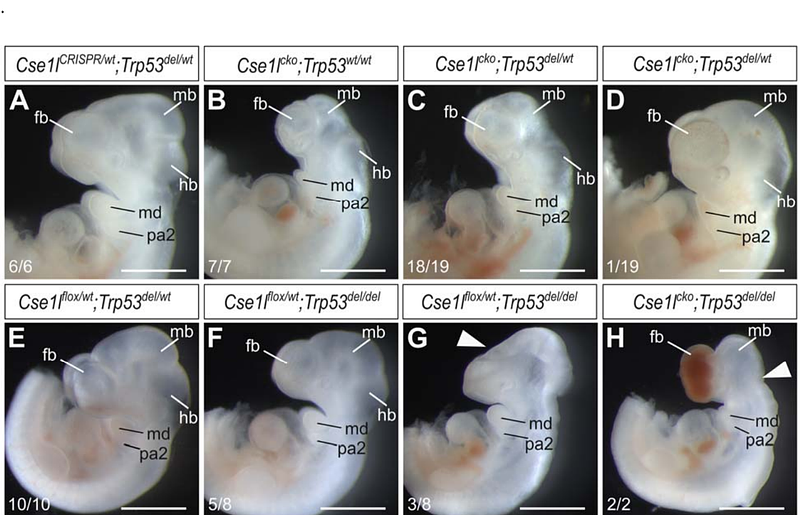Cse1l Regulates Neural Crest Cell Survival and is Critical for Craniofacial and Cardiac Development

Cse1l Regulates Neural Crest Cell Survival and is Critical for Craniofacial and Cardiac Development
Iyyanar, P.; Stottmann, R.
AbstractHuman congenital anomalies account for twice the mortality of childhood cancer. Despite advancements in genome sequencing and transgenic mouse models that have aided in understanding their pathogenesis, significant gaps remain. Through a forward genetics approach, we previously discovered the hypo-morphic anteater allele of Cse1l which displayed variable craniofacial phenotypes. To circumvent the variability seen in this model, we generated a conditional allele of Cse1l and genetically ablated it in the dorsal midline giving rise to portions of the nervous system and the cranial neural crest cells using the Wnt1-Cre2 driver. Our analysis revealed that Wnt1-Cre2; Cse1lCRISPR/flox embryos exhibited severe malformations in the forebrain, midbrain, and hindbrain, accompanied by a dramatic hypoplasia of the frontonasal, maxillary, and mandibular processes, and the second pharyngeal arch. Wnt1-Cre2; Cse1lCRISPR/flox embryos were embryonic lethal by E11.5 likely due to defects in the ventricular myocardium. Wnt1-Cre2; Cse1lCRISPR/flox embryos exhibited consistently increased apoptosis at E9.5 in the affected tissues along with an increase in p53 expression. These data together show a previously unknown critical function of CSE1L in neural crest cell survival during development.